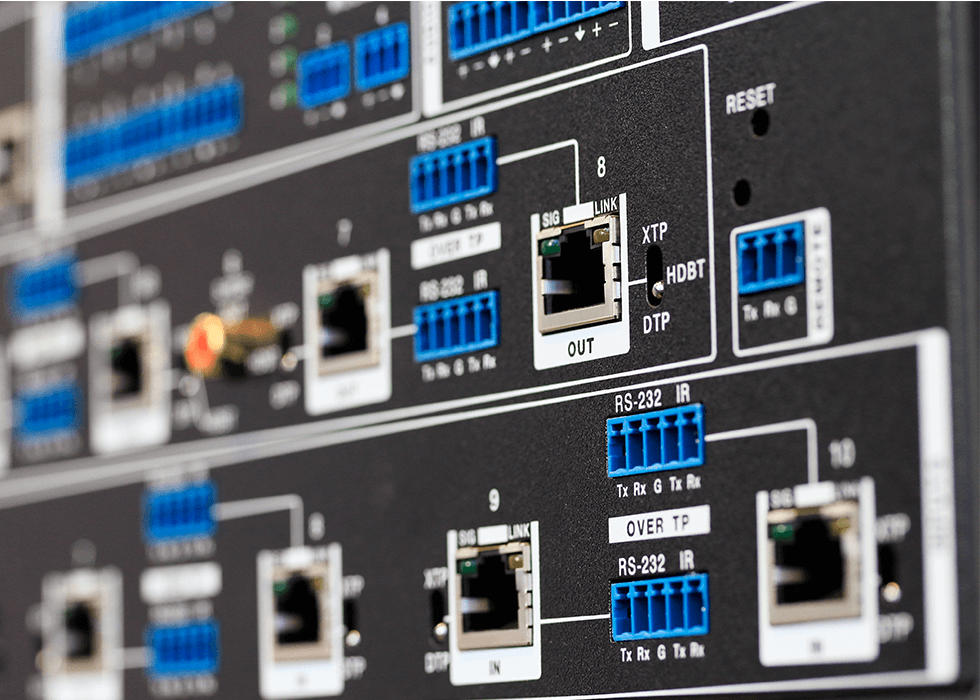Unified Communications and Collaboration: Creating the Exceptional Experience
By Nermina Miller and Brad Grimes, AVIXA
The following is the third in a three-part series on the role of the pro AV industry in unified communications and collaboration (UCC). In the first part, we discussed the skills required for AV professionals to play in this field and how UCC providers in the AV industry identify customer requirements. In the second part, we looked at some of the deployment challenges UCC users face and the way AV/IT professionals can help overcome them.
Many organizations already enjoy some degree of unified communications and collaboration (UCC) — smart interactive whiteboards, voice over IP, videoconferencing, audioconferencing, Microsoft Lync (or similar), resource scheduling or chat. Either the capabilities are already in place or the organizations are headed down the path toward more comprehensive UCC and realize they will need to make larger investments in their collaboration spaces. In either case, AV integrators play an important role in successful UCC deployments.
“Many manufacturers define UCC as what happens at the desktop and maybe the mobile device,” says Adam Kaiser, Assistant Vice President of Corporate Marketing at IVCi. “But the reality is that rooms are very much a part of a collaboration strategy. When a strong AV partner takes on UCC, they can build out an entire collaboration strategy for a customer that can span from the mobile device to the board room.”
Some of the UCC components that AV integrators find already in place when they’re called into a UCC project are integrated with an existing AV platform, with a single interface for accessing resources. Ultimately, however, customers’ UCC success comes from integrating AV and IT technologies, says Scott Wood, Senior Vice President of Technical Services for Unified AV Systems.
“A typical conference room we’ll design incorporates some type of interactive display, plus voice over IP,” Wood says. “We’ll integrate a videoconferencing solution, but it might actually use cloud-based services through the customer’s infrastructure. We’ll bring all that together in a single touchpanel that sits on the conference room table.”
By integrating disparate technologies into one user experience, an AV integrator helps ensure that the customer gets the most from its UCC investment. “Using the touchpanel, the end user doesn’t have to know how to use each piece of equipment,” Wood says. “The interaction between user and equipment appears seamless.”
‘Richness of Experience’
Paul Gragtmans, Principal of ET Group, says there are many ways to ensure an exceptional UCC experience. “Some [experiences] involve room systems and some are just virtual meetings,” he says. “The key ingredients are a good user interface; clear audio, HD video and flexible, powerful content sharing. The better the quality of these elements, the better the collaborative experience.”
Gragtmans refers to UCC nirvana as “the richness of experience.” It’s characterized by people’s ability to share senses, information and ideas over distances, with the user experience based largely on the quality and magnification of the sensual experience. Gragtmans even has a formula for this type of result:
(Availability + Usability) x Richness = Velocity of Collaboration.
“The point is that you can provide workers much richer communication and collaboration experiences over distance by having the right tools available to them and making it easy for them to connect to corporate meeting spaces,” says Gragtmans.
And AV professionals bring to UCC installations the expertise required to facilitate rich communication.
“We’ve seen a lot of poorly integrated UCC solutions,” says John Jennings, Assistant Vice President for Midwest Operations and Chief Technology Officer at Trinity Video Communications. “IT companies don’t always have the same appreciation for ergonomics and space considerations. We have to consider the acoustics of the room. We must determine what type of microphone system is required. How do you design a room so the person back in the corner can be heard just as well as the person sitting at the head of the table?”
Jennings says his company has had to rip and replace audio solutions that didn’t fit customers’ UCC needs. “They’re never happy about it,” he says, “but after they hear the difference, they realize why they need us.”
Commonality and Interoperability
Also key to exceptional UCC experiences — especially when it comes to AV and IT integration — are commonality and interoperability. According to Alex Bisset, Director of Sales Engineering at HB Communications, his company’s UCC customers may be diverse, but their UCC needs are not dissimilar. Over and over, Bisset says, customers request standardized systems based on common use cases. For many AV professionals who are used to creating custom AV designs, this can be a new way of thinking. But because UCC, by its nature, spans many different locations and collaboration spaces, “custom” may work against “exceptional.”
“Creating room deployment standards that are directly aligned with UC and IT strategy allows users to leverage common AV workflows that are designed in parallel with corporate information security and governance policy,” Bisset says. “Video-enablement then becomes a true extension of corporate and company social communications.”
In creating standard deployment designs, integrators must help identify UCC systems that work well together. Because many do not.
“An exceptional UCC experience requires of a good understanding of the UC platforms and the interoperability of various offerings to meet actual business needs, improve workflow and increase ROI,” says Rick Winde, Director of Advanced Video at MCW Solutions. He cautions that many solution providers have aligned themselves with different UCC offerings, but if their solutions are not intuitive or don’t function well within the customer’s workflow, “they are bound to fail.”
“This can be resolved by creating commonality, as opposed to traditional consultant-style designs,” Winde says.
MCW Solutions has utilized a design that allows users to share various displays in a room simply by joining a meeting. The displays have occupancy sensors that cause them to power up when users enter the space. “The display shows the meeting information on the opening page,” Winde says. “The user touches the screen and the meeting commences.”
For its part, HB Communications has worked with corporate clients to deploy systems from Crestron, Polycom and SMART Technologies that extend enterprise Lync deployments into conference rooms and other meeting spaces. The user experience in the collaboration space blends natively with the experience at the desktop or mobile device level. Users leverage existing network credentials to access federated and secure environments where typical UCC tools, such as enterprise email and calendars are easily integrated.
“The AV integrator who embraces and adapts to modern user UCC requirements creates value for its customers by transparently integrating AV systems with common UCC user needs,” Bisset says. “These interwoven disciplines make an AV integrator a good fit as a UCC solutions provider.”








